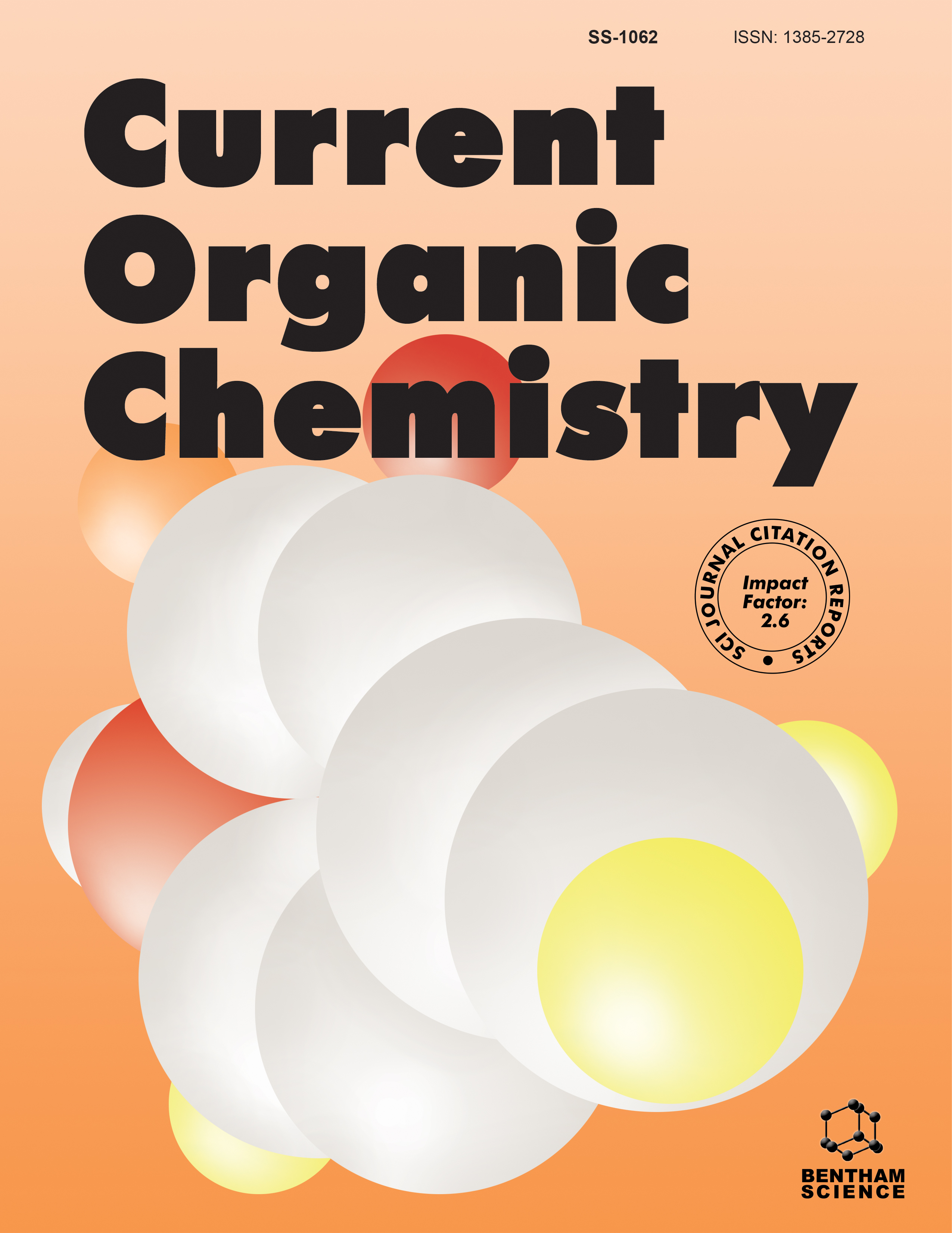- Home
- A-Z Publications
- Current Organic Chemistry
- Previous Issues
- Volume 20, Issue 13, 2016
Current Organic Chemistry - Volume 20, Issue 13, 2016
Volume 20, Issue 13, 2016
-
-
Recent Progress in the Chemistry of 2-Unsubstituted 1H-Imidazole 3-Oxides
More LessAuthors: Grzegorz Mloston, Marcin Jasinski, Aneta Wróblewska and Heinz HeimgartnerThe 2-unsubstituted 1H-imidazole 3-oxides, considered as ‘nitrone-like’ azaheterocycles, are well known as versatile building blocks, useful for the preparation of more complex systems containing an imidazole moiety. Their applications in diverse reactions, such as isomerization to corresponding imidazol-2-ones, [3+2]-cycloadditions, sulfur transfer reactions leading to imidazole-2-thiones, heterocyclizations leading Read More
-
-
-
N-Arylation of Amidines and Guanidines: An Update
More LessAuthors: Grigory Kantin and Mikhail KrasavinAmidines and guanidines are prominent privileged motifs present in many biologically active synthetic compounds as well as natural products. Introduction of an aryl or heteroaryl group at a nitrogen atom of amidines and guanidines attenuates the basic properties of these cores, allows for appending various lipophilic groups and has, in turn, given rise to many new compounds endowed with diverse biological activities. This Read More
-
-
-
TEMPO Functionalized Polymers: Synthesis and Applications
More LessAuthors: Shaojie Liu, Huali Wang, Yubin Xing, Xiaomeng Chu, Fengqing Zhao and Erjun TangTEMPO functionalized polymers have been widely applied as cathode-active materials for organic radical batteries, recoverable catalysts for selective oxidation of alcohols and inhibitors for the synthesis of acrylate monomers. This review mainly presents the significant advances which have been made in the last decade, including their synthesis methods and application fields.
-
-
-
Recent Advances in Applications of POMs and Their Hybrids in Catalysis
More LessAuthors: Samahe Sadjadi and Majid M. HeraviPolyoxometalates (POMs) and their hybrid systems are green and efficient catalysts which have found a wide range of application, due to their outstanding properties such as high thermal stability, Redox potential, strong Bronsted acidity, non-corrosive nature and sensitivity to electricity and light. They are able to catalyze various organic reactions as well as being involved in photocatalytic processes. In this review, we try to hi Read More
-
-
-
Reusable MCM-41 Immobilized Rh(I) Hydroformylation Catalysts Built on Binaphthyl-based Phosphoramidite and Phosphite Ligands
More LessThe immobilization of Rh/phosphorus complexes in MCM-41 was performed using two different methodologies. The first synthetic strategy was based on the covalent attachment of a new binaphthyl-based phosphoramidite ligand through a trimethoxysilyl linkage, followed by its complexation with the rhodium(I) precursor Rh(CO)2(acac). The resulting heterogeneized Rh(I)/phosphoramidite complex was character Read More
-
Volumes & issues
-
Volume 29 (2025)
-
Volume 28 (2024)
-
Volume 27 (2023)
-
Volume 26 (2022)
-
Volume 25 (2021)
-
Volume 24 (2020)
-
Volume 23 (2019)
-
Volume 22 (2018)
-
Volume 21 (2017)
-
Volume 20 (2016)
-
Volume 19 (2015)
-
Volume 18 (2014)
-
Volume 17 (2013)
-
Volume 16 (2012)
-
Volume 15 (2011)
-
Volume 14 (2010)
-
Volume 13 (2009)
-
Volume 12 (2008)
-
Volume 11 (2007)
-
Volume 10 (2006)
-
Volume 9 (2005)
-
Volume 8 (2004)
-
Volume 7 (2003)
-
Volume 6 (2002)
-
Volume 5 (2001)
-
Volume 4 (2000)
Most Read This Month
Article
content/journals/coc
Journal
10
5
false
en


